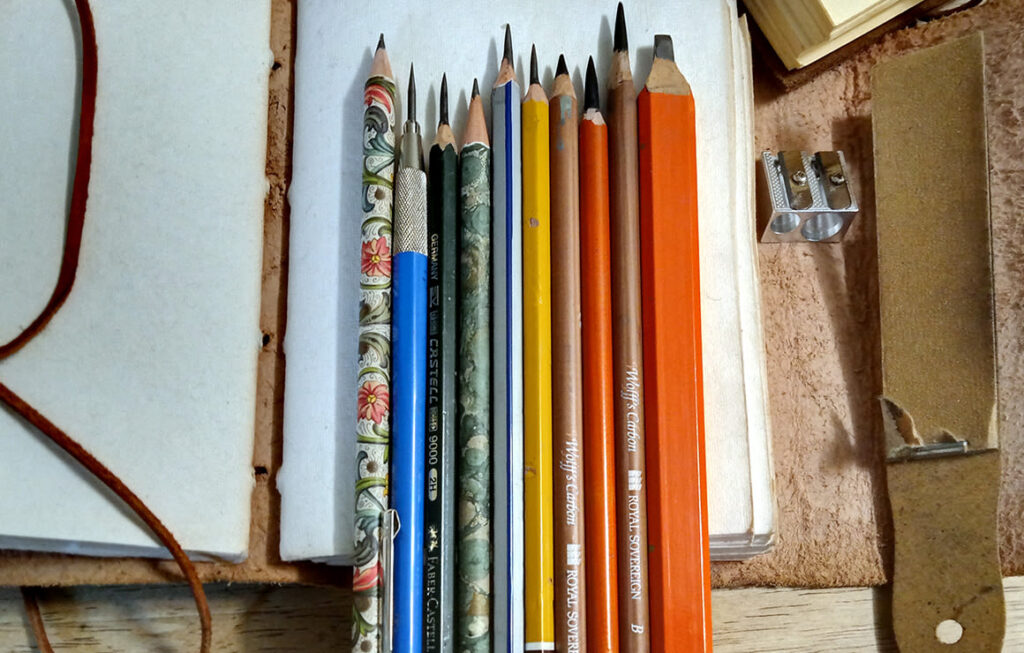Pencils, those humble yet indispensable tools, have long been an essential part of human creativity and communication. From the early days of charcoal sticks wrapped in string to the sleek, precision-engineered instruments of today, different types of pencils have played a crucial role in shaping our ideas and bringing them to life on paper. Let’s delve into the fascinating world of pencils, where graphite meets wood to leave an indelible mark on history and imagination alike.
Different Types of Pencils
While human civilisation did indeed start from burnt charcoal sticks, we have come a long way. At present, the market is flooded with different types of pencils, which can leave the consumer perplexed. Whether for writing, sketching, coloring, or marking, the diverse array of pencils caters to every need and preference, ensuring that there’s always the perfect tool at hand to bring ideas to fruition. Today, we’ll discuss some of the different types of pencils, their composition, and their uses.
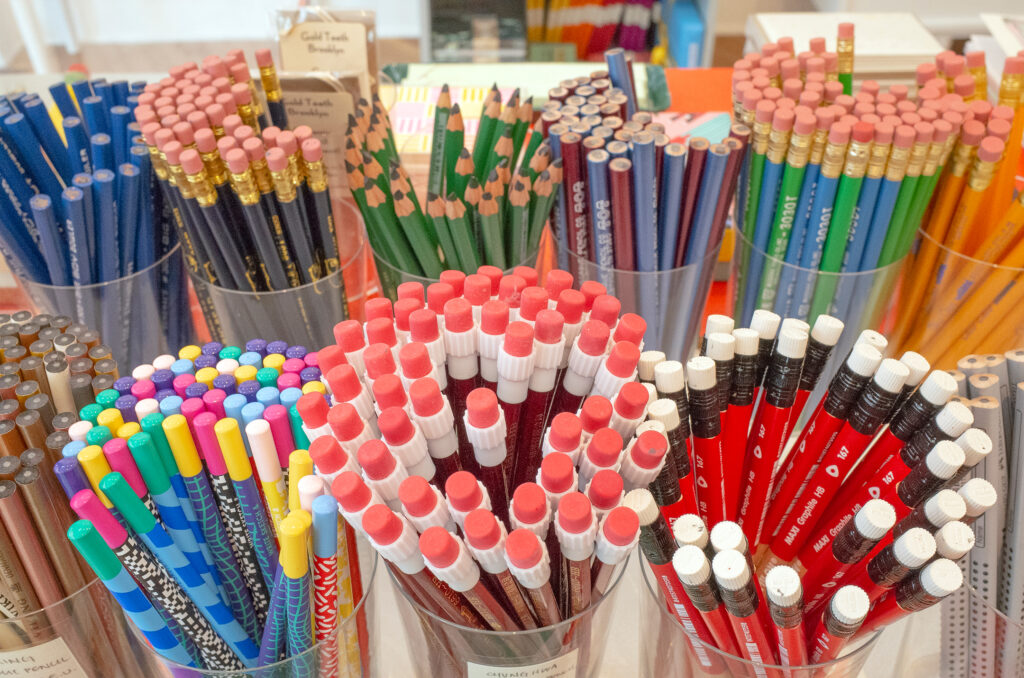
Mechanical Pencils
Mechanical pencils are pencils whose outer casing is reminiscent of a pen. They come with a replaceable and extendable lead core. The lead is often made out of graphite and extends via constant pumping at the clicker. They come with erasers at the end, which can be used to erase any mistakes. When using mechanical pencils, you do not need a sharpener and they’ll create lines of the same width every time. They are often used in technical drawing and architectural sketching.
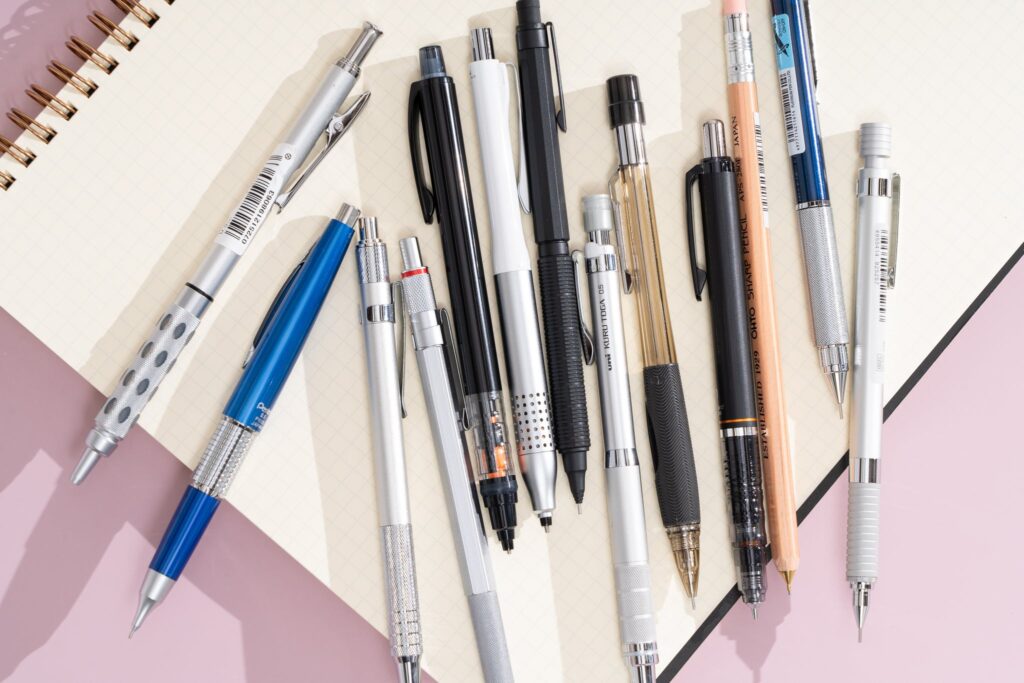
Colored Pencils
As the name suggests, colored pencils showcase a vast variety of colors. The wooden cylindrical case features a narrow pigmented core. This lead is oil or wax-based and comprises a diverse ratio of additives, binding agents, and pigments. Colored pencils are sold at differing rates. It is because, every brand has a different pigment concentration, lightfastness, durability of the outer shell, and the core’s softness. They are more affordable, cleaner, and may produce lines of various thicknesses.
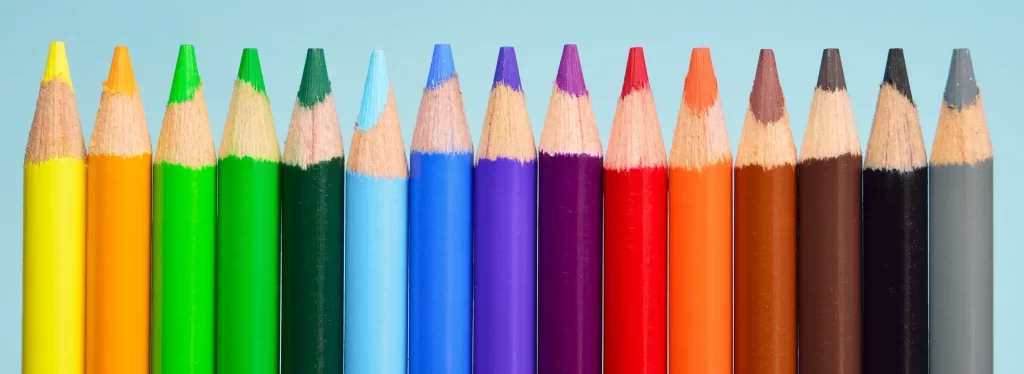
Graphite Pencils
Graphite pencils are the most basic pencils that you can find in the market. The lead is made up of a mixture of graphite and clay. The darkness of the pencil depends upon the ratio of these two elements. More graphite means a darker mark. Similarly, more clay means a softer mark. There are 19 degrees of graphite pencils’ hardness. It ranges from 14 B to 6 H. The ‘H’ refers to the hardness or the density whereas the ‘B’ depicts the blackness of the graphite pencils. Hence, each pencil will give you a different texture and shades.
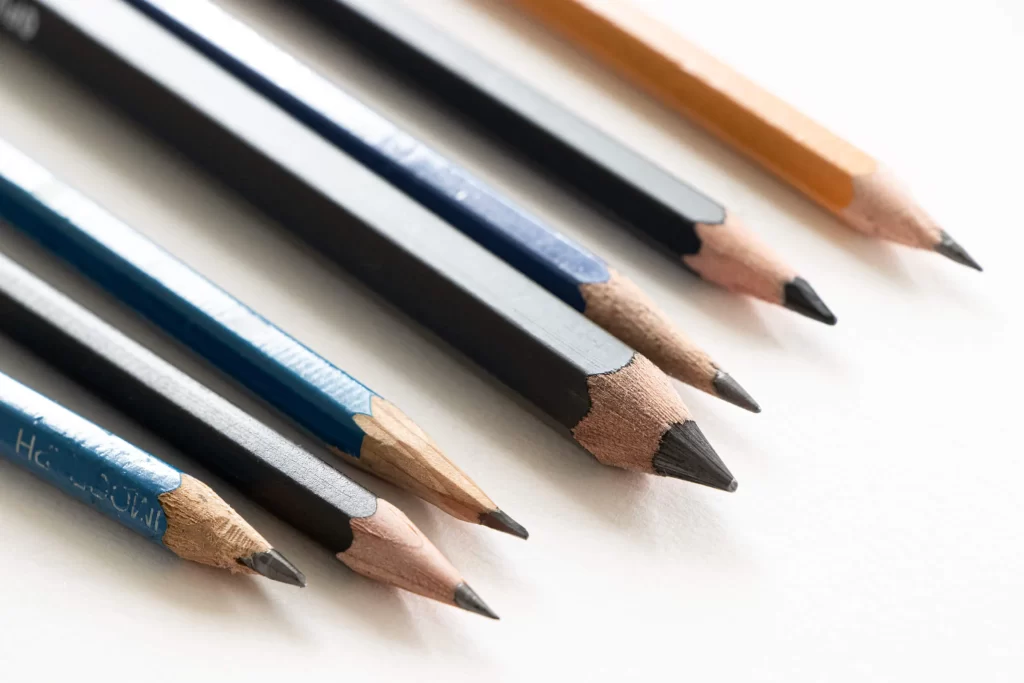
Watercolor Pencils
Watercolor pencils or water-soluble color pencils are extremely similar to colored pencils. They have the same core and the outer wooden case. The only difference? The core of watercolor pencils is made with a water-soluble binder. Hence, once you add water to your pencil mark, the pigment dissolves, rendering watercolor paint. This can be manoeuvred through a paintbrush. Using a watercolor pencil can enhance color saturation and allow you to mix two colors seamlessly.
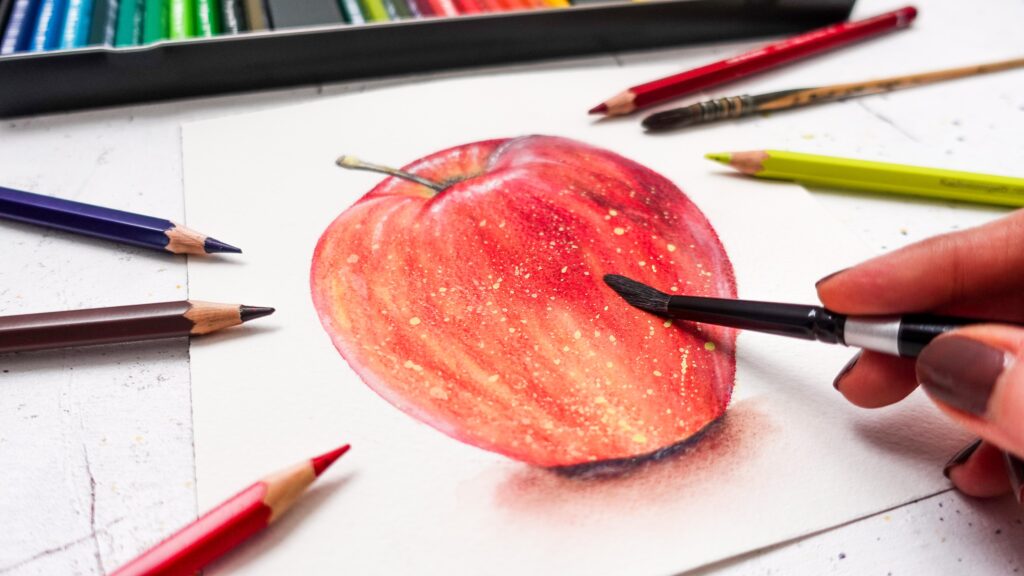
Carbon Pencils
Although graphite and carbon pencils are sold as the same products in the market, there lies a small difference. Carbon pencils are made of a blend of clay and lamp black. Lamp black is made by burning oil in a low-oxygen environment. The soot is later collected and mixed with clay to form a carbon pencil. Carbon pencils have a deeper black colour and smooth application. Since they are oil-based, erasing their mark is an arduous task.

Eco-Friendly Pencils
At a time when the world is concerned with sustainability, eco-friendly pencils have become quite popular within the art community. A traditional pencil utilises wood as its outer core. However, eco-friendly pencils are made without wood or polymer. Recycled paper is collected and rolled, akin to a blending stump with a strong adhesive. This makes them biodegradable and sustainable. There are several eco-friendly pencils which have seeds at the end, which may be planted after use.

Grease Pencils
Grease pencils are alternatively called wax pencils as the main component of their core is wax-based. It allows you to write or draw on glossy, non-porous surfaces. The core is made of non-toxic wax, much like crayon. These are water-resistant and can be wiped off with a paper towel. However, they will always leave a faint stain on the surface. They rarely scratch a surface, hence they find use in glassware, ceramics, stones, photographic sheets, plastic, and other glazed surfaces. The outer covering of grease pencils may be made out of wood or peelable paper.
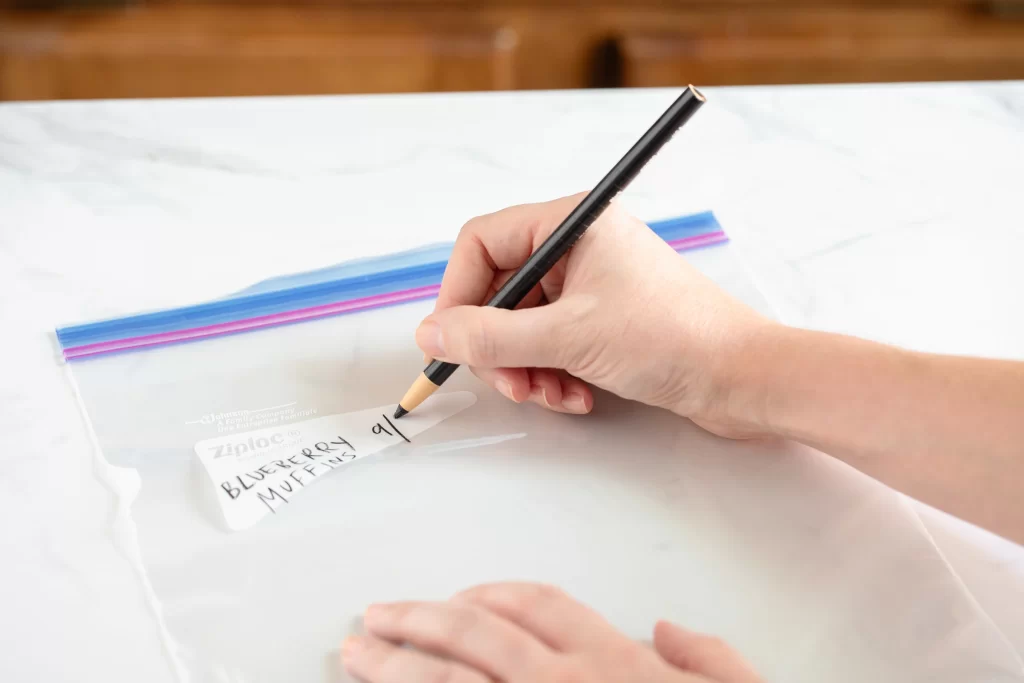
Woodless Pencils
When we say woodless pencils, we aren’t referring to eco-friendly pencils, but pencils which are made entirely of graphite. They look and feel like a traditional ergonomic graphite pencil, with a similar spectrum of hardness and blackness. However, they are extremely brittle and may leave a residue on your hands. Since they are essentially solid graphite sticks, they are a little heavier compared to their traditional counterparts. You may even make graphite powder with their shavings.
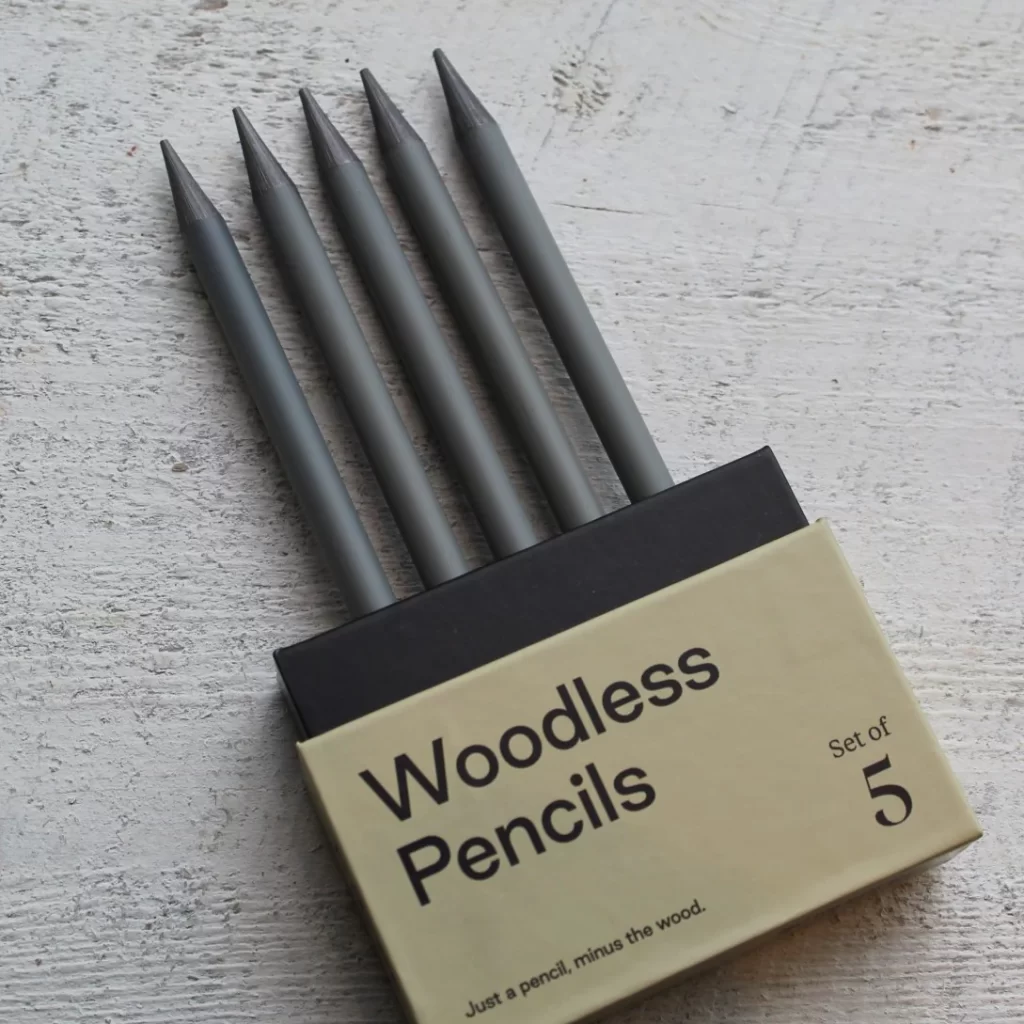
Glitter and Highlight Pencils
This one is for anybody OBSESSED with makeup. We know of the miracle of invisible face tapes. It’s time to learn about glitter and highlight pencils. They may undoubtedly refer to pencils whose outer core is rhinestone or made with a sparkly compound. However, traditional glitter and highlight pencils are mostly used for makeup. They may be used as an eyeliner or simply as a shiny contour. They look and feel like a regular pencil, but they constitute of non-toxic oil-based formula. However, before using, you must do a swatch test on your skin.
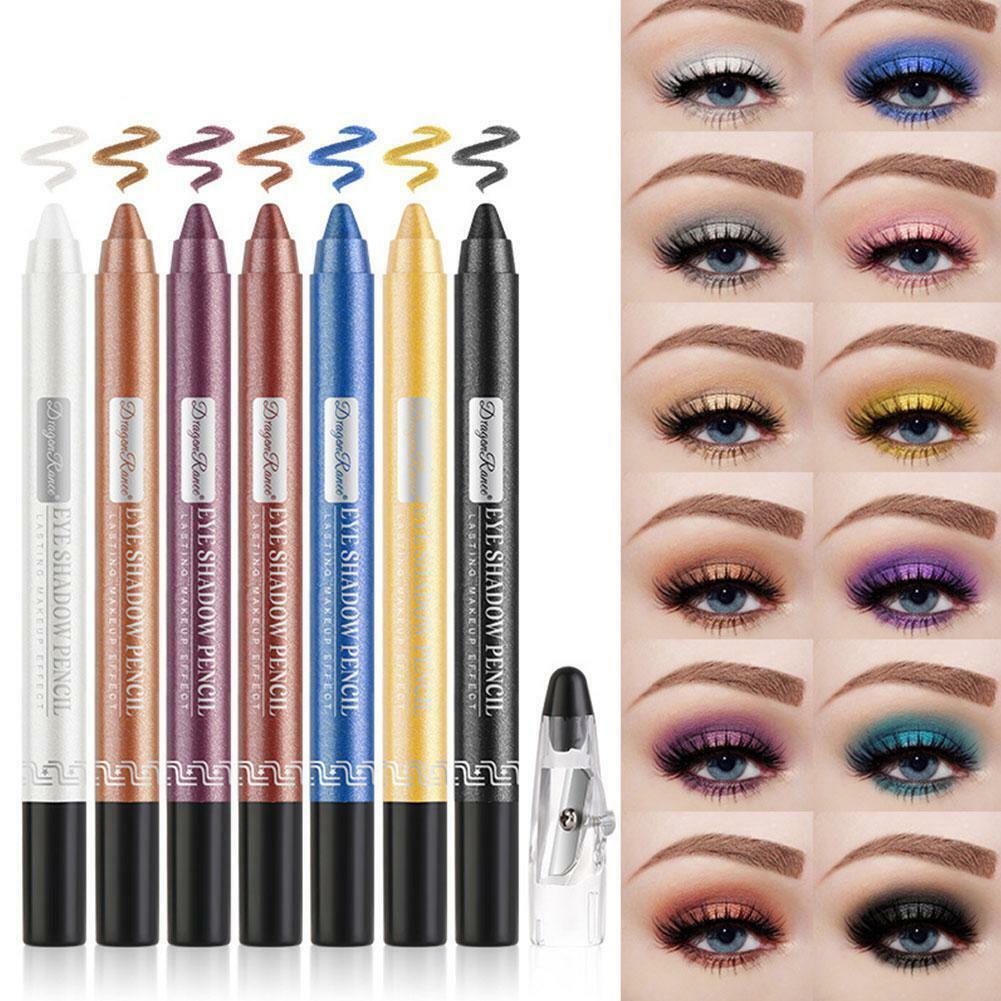
Image Courtesy – Blick Art Materials

